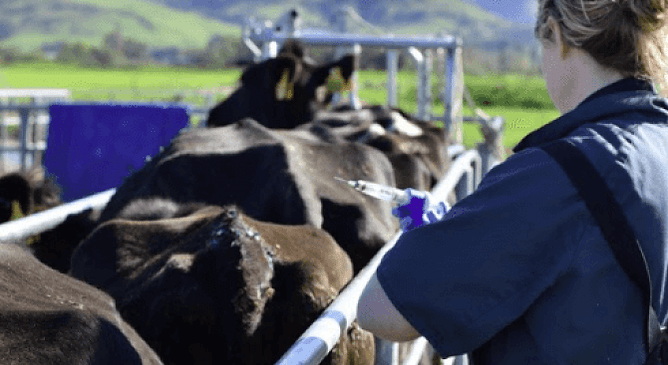New research has shown the benefits of trace element support precalving and its impact on milk quality.
The pioneer multiple trace element injection in New Zealand, MULTIMIN is a unique concept of supplementation for cattle, used by farmers throughout the country.
is a unique concept of supplementation for cattle, used by farmers throughout the country.
- Contains copper, selenium, zinc and manganese for immune support.
- Chelated formulation that is safe and tissue friendly.
- Absorbed into blood within 8 hours and transferred to the liver within 24 hours.
- Scientifically proven in New Zealand to enhance herd performance.
Supplementing herds with trace elements
Most farmers have well-managed trace element programmes, and these work well for the majority of the year. However, there are times when the requirements for trace elements rapidly increase, often coinciding with reduced feed intake or changes in diet. When this occurs even well-supplemented herds can temporarily dip into a slight deficiency. These periods of high demand often lead to higher levels of disease, and sometimes short-term drops in production, growth or fertility. Calving is a good example of a high-stress period where trace element demand increases.
The role of trace elements in milk quality
There are a growing number of studies from both New Zealand and overseas showing that MULTIMIN can boost immunity and reduce disease. A great example of this is in calves, with local research showing that we can improve the function of white blood cells, and halve death and disease with an injection at birth. In theory increased white blood cell activity should also have a positive effect in adult cattle, particularly in diseases where we know this is an important part of the immune response, such as mastitis.
can boost immunity and reduce disease. A great example of this is in calves, with local research showing that we can improve the function of white blood cells, and halve death and disease with an injection at birth. In theory increased white blood cell activity should also have a positive effect in adult cattle, particularly in diseases where we know this is an important part of the immune response, such as mastitis.
Supported by local science
1,700 cows across 4 herds were enrolled in a recent New Zealand study1. Half were injected with 5 ml of MULTIMIN 14-28 days before calving, at the same time as they were given an anti-scours vaccine. All herds were fully supplemented with oral trace element mixes, with blood tests confirming copper and selenium levels were well within normal ranges on the day of treatment.
14-28 days before calving, at the same time as they were given an anti-scours vaccine. All herds were fully supplemented with oral trace element mixes, with blood tests confirming copper and selenium levels were well within normal ranges on the day of treatment.
Results showed a halving of clinical mastitis in the first 30 days after calving (from 4.2% down to 2.0%). The proportion of cows with subclinical mastitis was also reduced by 25%.
There was a low level of disease in these herds, and trace element levels were within normal ranges, reflecting that these were well-managed farms. This reinforces the importance of trace elements in supporting the immune system when stressful events increase demand, even where disease is well controlled and no deficiencies are apparent. It also means that we potentially have another tool in the kit to make gains in milk quality on even the best performing farms, which would further reduce reliance on antibiotics.
Return on investment for MULTIMIN injection pre-calving
It’s important to make sure there is a strong enough economic effect to justify the investment. Using the SmartSAMM Gap Calculator we can estimate the return in a 400 cow herd if the same results seen in the trial are achieved. Assuming 400kgMS/cow and a conservative $6.50 payout, the benefit is over $7,000 - a return on investment of about 4:1.
In summary, this study gives us an economically viable option to make improvements in milk quality on almost all farms.
To learn more, including the benefits of using MULTIMIN in calves, and in your herd pre-mating, visit performanceready.co.nz and ask your vet.
in calves, and in your herd pre-mating, visit performanceready.co.nz and ask your vet.
Virbac data on file. Registered pursuant to the ACVM Act 1997, No. A009374.

